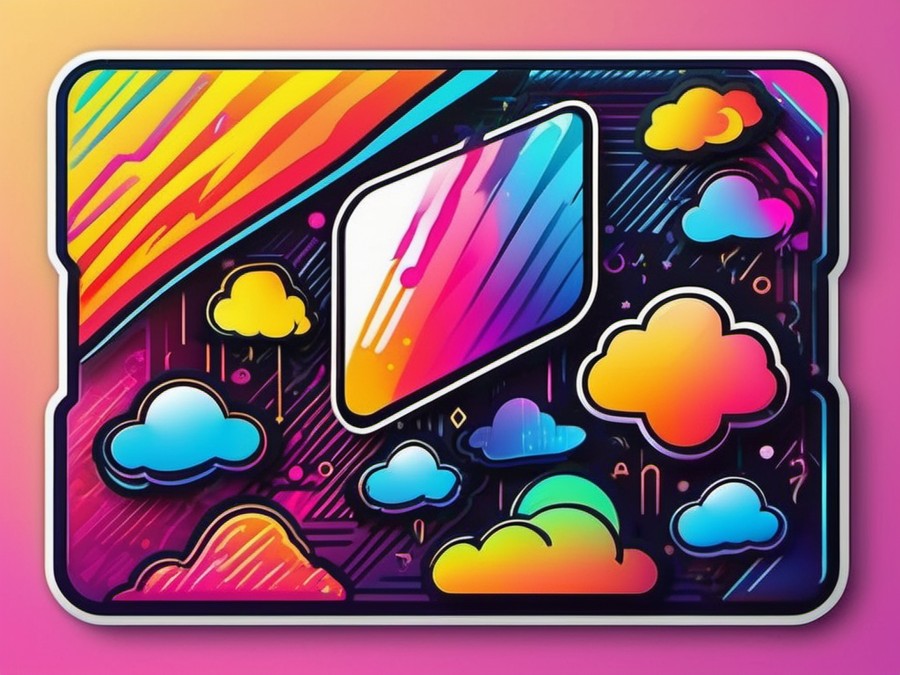· Charlotte Will · Screen Protector Foils · 6 min read
What is the Difference Between Matte and Glossy Screen Protector Foils?
Discover the key differences between matte and glossy screen protector foils. Learn how to choose the best one for your needs, from reducing glare to enhancing colours.

In today’s digital world, our devices are as much a part of us as our clothes or accessories. And just like we protect our clothing with special washing methods and our accessories with careful handling, we need to protect our devices. One of the most common ways to do this is with screen protector foils, which come in two primary types: matte and glossy. So, what’s the difference between these two? Let’s find out!
Understanding Screen Protector Foils
Before diving into the specifics, let’s get a clear understanding of what screen protector foils are. Screen protectors are thin films applied to the surface of a device’s screen to safeguard it against scratches, cracks, and other forms of damage. They come in various types and materials, including matte and glossy finish protectors, each with its unique features.
What is a Matte Screen Protector?
A matte screen protector is designed to minimise glare and reflections. It has a non-reflective finish that mimics the appearance of matte paper. Matte protectors are fantastic for those who frequently use their devices outdoors or in bright environments, as they significantly reduce the visibility of fingerprints.
Advantages of Matte Screen Protectors
- Glare Reduction: Excellent at reducing glare, making them ideal for outdoor use.
- Fingerprint Resistance: Less visible fingerprints, keeping your screen cleaner for longer.
- Eye Strain Reduction: Can help reduce eye strain in bright environments.
Disadvantages of Matte Screen Protectors
- Colour Dulling: May slightly dull the colours compared to a glossy protector.
- Textured Feel: The slight texture might feel different compared to the original screen.
What is a Glossy Screen Protector?
On the other hand, glossy screen protectors offer a smooth, shiny surface. They enhance the natural colours and vibrancy of your screen, offering a sharper viewing experience. These protectors are perfect for those who appreciate high-definition visuals and want to preserve the original appearance of their device’s display.
Advantages of Glossy Screen Protectors
- Vibrant Colours: Retains and even enhances the original colours of your screen.
- Original Screen Feel: Maintains a smooth, sleek texture similar to the original screen.
- Sharp Visuals: Provides high-definition visuals, great for watching videos or browsing photos.
Disadvantages of Glossy Screen Protectors
- Glare and Reflections: Can cause some glare and reflections, especially in bright environments.
- Fingerprint Visibility: Fingerprints are more visible but can be wiped off easily.
Key Differences
1. Appearance
- Matte: Non-reflective, reduces glare and reflections.
- Glossy: Shiny, smooth surface that enhances screen colours and clarity.
2. Texture
- Matte: Slightly textured, providing a grippy feel.
- Glossy: Smooth and sleek to the touch.
3. Visibility of Fingerprints
- Matte: Reduces the visibility of fingerprints.
- Glossy: Fingerprints are more visible but can be wiped off easily.
4. Glare Reduction
- Matte: Excellent at reducing glare, especially in bright environments.
- Glossy: Can cause some glare and reflections, particularly in bright light.
5. Colour Accuracy
- Matte: May slightly dull the colours of your screen.
- Glossy: Retains and enhances the original colours of your screen.
Which One is Better?
The choice between a matte and glossy screen protector depends on your personal preferences and usage habits. If you spend a lot of time outdoors or in brightly lit environments, a matte protector might be more suitable. On the other hand, if you enjoy vibrant colours and high-definition visuals, a glossy protector could be the better choice.
Pros and Cons
Matte Screen Protector Pros:
- Reduces glare and reflections.
- Less visibility of fingerprints.
- Can help reduce eye strain in bright environments.
Matte Screen Protector Cons:
- May slightly dull the colours of your screen.
- Slight texture might feel different compared to the original screen.
Glossy Screen Protector Pros:
- Enhances the natural colours and vibrancy of your screen.
- Smooth, sleek texture that feels like the original screen.
- Provides high-definition visuals, great for watching videos or browsing photos.
Glossy Screen Protector Cons:
- Can cause some glare and reflections in bright environments.
- Fingerprints are more visible but can be wiped off easily.
Tips for Choosing the Right Screen Protector
- Consider Usage Environment: Think about where you use your device most. If it’s outdoors or in brightly lit environments, matte protectors are better.
- Visual Preferences: If you prefer vibrant colours and high-definition visuals, a glossy protector is your best bet.
- Handling Comfort: Both types have different textures. Try to feel them in a store if possible to decide which one you prefer.
- Budget: Screen protectors vary in price, so consider your budget when making a choice.
Caring for Your Screen Protector
Regardless of the type you choose, taking good care of your screen protector is essential. Here are some tips:
- Clean Regularly: Use a soft, damp cloth to clean your screen protector regularly.
- Avoid Harsh Chemicals: Stay away from harsh chemicals that can damage the protector.
- Be Gentle: Don’t scratch or poke at your screen protector with sharp objects.
- Check for Bubbles: If you see bubbles forming under the protector, try to remove them gently to maintain its effectiveness.
Lifespan of Screen Protectors
The lifespan of a screen protector depends on how well you care for it. With proper care, they can last for several months to a year. For more details on the lifespan of screen protectors, check out this article.
Impact on Touch Sensitivity
Some users might wonder if screen protectors affect touch sensitivity. Modern screen protectors are designed to not affect touch sensitivity, but very thick ones might cause minor issues. For more information on this topic, see What is the Impact of Screen Protector Foils on Touch Sensitivity?.
Best Method for Applying Screen Protector Foils
Applying a screen protector foil is a delicate process. It’s crucial to follow the best method to ensure it adheres properly and doesn’t get bubbles or dust trapped underneath. For a comprehensive guide on the best application method, refer to What is the Best Method for Applying Screen Protector Foils?.
Privacy Screen Protectors
If you’re looking for an extra layer of security, consider a privacy screen protector. These protectors limit the viewing angle to prevent others from seeing your screen content. For more details on how they work, check out What is a privacy screen protector and how does it work?.
Conclusion
Choosing between a matte and glossy screen protector foil is all about your personal preferences and how you use your device. Both types have their advantages, from reducing glare to enhancing colours. Take the time to consider your needs and environment before making a decision.
FAQs
- Which is better for outdoors? Matte screen protectors are generally better for outdoor use as they reduce glare and reflections.
- Can I switch between matte and glossy? Yes, you can switch between the two types depending on your needs. However, be careful when removing and applying new protectors to avoid damaging your screen.
- Do screen protectors affect touch sensitivity? Modern screen protectors are designed to not affect touch sensitivity. However, very thick ones might cause minor issues.
- How long do screen protectors last? The lifespan of a screen protector depends on how well you care for it. With proper care, they can last for several months to a year.
- Can I use both matte and glossy protectors on the same device? It’s not recommended to use both types simultaneously as it might cause interference and reduce the effectiveness of either protector.




